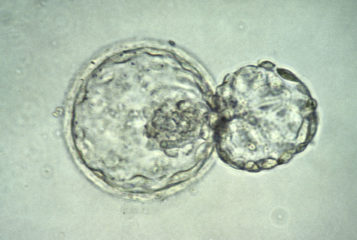Heart cells derived from human embryonic stem cells are capable of regenerating damaged heart muscle in primates, a US study has found.
Researchers from the University of Washington injected one billion human embryonic stem cell-derived cardiomyocytes (hESC-CM) into the hearts of pigtail macaques after the animals had heart attacks. The cells were able to survive, mature and regenerate 40 percent of the damaged heart tissue.
Heart muscle that is damaged after a heart attack is not normally able to regenerate and scar tissue forms in the damaged areas of the heart. Scar tissue affects the heart's ability to pump blood around the body and can lead to heart failure over time. In Britain, approximately 100,000 people suffer from heart attacks each year, and 750,000 people live with heart failure.
Stem cells have shown promise in regenerating heart muscle in rodents but, says Charles Murry, professor of bioengineering and pathology at the University of Washington, who led the research, 'before this study, it was not known if it is possible to produce sufficient numbers of these cells and successfully use them to remuscularise damaged hearts in a large animal whose heart size and physiology is similar to that of the human heart'.
'It shows for the first time that we can do regeneration at a scale that the world has never seen before', he added.
The injected cells were able to mature and function as new heart muscle by creating electrical connections with neighbouring cells in order to beat in synchrony. However, all of the animals who received the stem cell treatment developed arrhythmias - irregular heart beats - over a period of two to three weeks. The researchers believe that this could be due to the injected cells being too immature. After three months, the cells had matured, stabilised and integrated into the heart, and the arrhythmias subsided.
The cells were injected two weeks after the macaques had heart attacks in the period before scar tissue begins to form. The macaques were given immunosuppressant drugs to prevent the human cells being rejected by their immune system.
Ninety percent of the injected cells died, but ten percent were able to survive and integrate into the heart tissue. New blood vessels were able to form in the areas of regenerated heart muscle. The ejection fraction - a measure of the heart's ability to pump blood through the body - improved in some but not all of the animals.
'This is as close as you can get to putting these cells into humans. It's really important, because this is looking at a large amount of muscle, and that has not been done before. It's what you are going to need in humans', Professor Sian Harding, director of the British Heart Foundation Cardiovascular Regenerative Medicine Centre at Imperial College London, told The Guardian. 'It shows us you can make the muscle, keep it there, get the blood vessels in, and have it work even at high heart rates'.
Chris Mason, professor of regenerative medicine at University College London, said that 'although a 40 percent improvement might not seem like a lot, you actually only need a couple of percent to make a difference to someone's quality of life'.
He added: 'It may be that this treatment would actually work better in humans because the monkeys in the study had to be given immunosuppressant treatment because the stem cells were human'.





Leave a Reply
You must be logged in to post a comment.